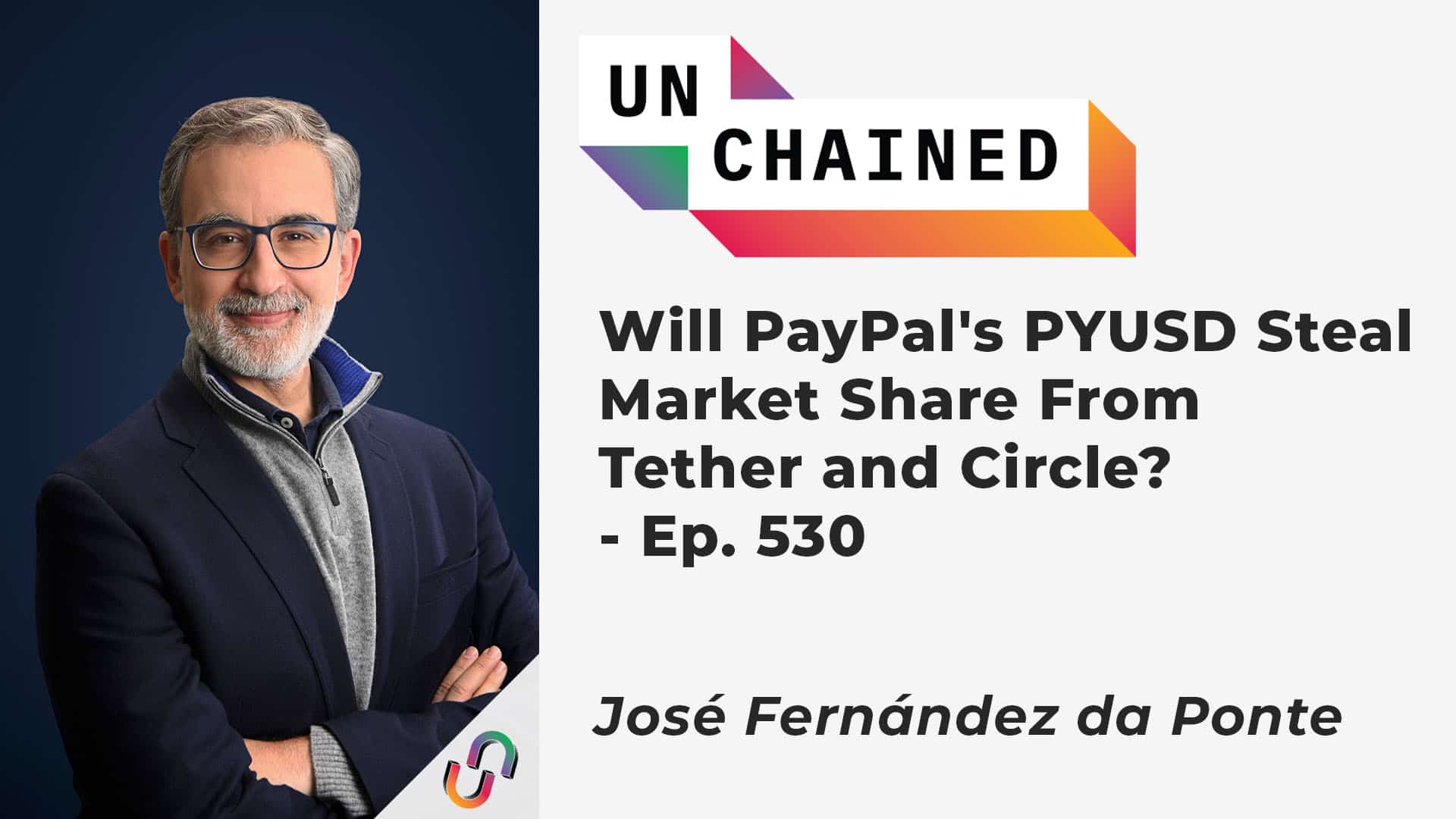A major player has entered the stablecoin wars. PayPal went deeper down the crypto rabbithole this week with the launch of its Ethereum-based PYUSD. The dollar-backed stablecoin now puts PayPal in competition with the likes of Tether and Circle for quickly sending value around the world on-chain. José Fernández da Ponte, PayPal’s crypto SVP, joins the show to unpack how the fintech giant is building a long-term strategy around blockchain-based payments.
Listen to the episode on Apple Podcasts, Spotify, Overcast, Podcast Addict, Pocket Casts, Stitcher, Castbox, Google Podcasts, Amazon Music, or on your favorite podcast platform.
Show highlights:
- why PayPal decided to launch a stablecoin
- how long it will take for stablecoins to reach mainstream adoption and what the advantages of stablecoins are
- how PYUSD will differentiate from other giants in the stablecoin space such as USDT and USDC
- whether the U.S. stablecoin bill influenced the launch of PYUSD
- why stablecoins should be regulated at the state level
- whether PayPal plans to launch stablecoins pegged to other fiat currencies
- how Paxos will provide attestation reports for PYUSD
- why Jose thinks gaming is a huge opportunity for stablecoin payments
- what the rationale was for launching an ERC-20 on Ethereum
- how PayPal plans to monetize the stablecoin
- why PayPal’s expectations for PYUSD in the short-term are “moderate”
Thank you to our sponsors!
Guest
- José Fernández da Ponte, SVP of Blockchain, Crypto and Digital Currencies at PayPal
Links
- Unchained: PayPal Launches PYUSD Stablecoin Built on Ethereum
- CoinDesk:
- PayPal’s Real Stablecoin Strategy: It Wants to Earn Interest on Your Deposits
- Congresswoman Maxine Waters Says She’s ‘Deeply Concerned’ About PayPal’s New Stablecoin
- U.S. Stablecoin Bill Takes Big Step Despite Fight From Democrats, White House
- Paxos Has Other ‘White Label’ Stablecoin Opportunities in the Works in Addition to PayPal USD
- Blockworks: PayPal’s new stablecoin stirs centralization criticism
- CNBC: PayPal is trying to drag its 435 million users into the $120 billion stablecoin market — here’s why




